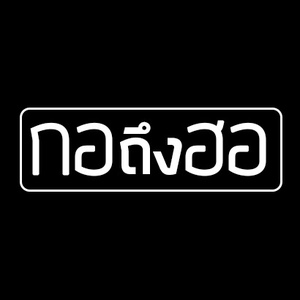Search
1/1
฿350.00
฿499.00-30%
Trailak in Quantum หนังสือไตรลักษณ์ในควอนตัม ฉบับภาษาอังกฤษ บ.สำนักพิมพ์กอถึงฮอ จำกัด จัดจำหน่ายแต่เพียงผู้เดียว
Sold by บริษัท สำนักพิมพ์กอถึงฮอ จำกัด
Select options
Select
Shipping
From ฿29.00
Est. delivery by Apr 23 - Apr 25
Specifications

บริษัท สำนักพิมพ์กอถึงฮอ จำกัด
11 items
About this product
ประเภทของฉบับฉบับปกติ
ประเภทของปกหนังสือปกอ่อน
ผู้เขียนสิรวิชญ์ รัตน์จินดา
Product description
TRAILAK IN QUANTUM
Sirawich Ratjinda: Author, Cover design, Layout
Saowalak Seethao: Translator
The Thai version was first published in 2019
English version first published in 2023
The confluence of Buddhism and Science. The Quantum Theory help to explain the rules of The Three Characteristics (Trailak).
This book has brought the Buddha’s dharma on the three characteristics (Trailak), let’s explain the possibilities of life, the world, and the universe according to the knowledge of modern science so that we can see that all things exist under the rule of the three characteristics (Trailak).
That is, all things are impermanence (anitjang), suffering (dukkha), and have no self (anatta). Which will result in us relaxing in our adherence to self-confidence, passions will be lighter, bring happiness and peace in life It is also the basis for Nirvana.
Contents
1 The secret of the three characteristics (Trailak)
•Three characteristics (Trailak) of ordinary people
•3 truths
•Saw the Three Characteristics (Trailak) and found happiness
2 The three characteristics (Trailak) in five Aggregates (Khandha), (Body)
•The human element
•Corporeality (RupKhan)
3 The three characteristics (Trailak) in five Aggregates (Khandha), (Mind)
•NamKhan (Mind)
•The relationship of the five Aggregates (Khandha)
4 The three characteristics (Trailak) in Modern Cosmology (1)
•Point to have no self
•The last breath of the stars
5 The three characteristics (Trailak) in Modern Cosmology (2)
•The universe is happening-ending
•Mystery of the Universe
6 The three characteristics (Trailak) in Quantum Physics (1)
•Dear Friend Quark
•Cycle of Matter
•World of illusion
7 The three characteristics (Trailak) in Quantum Physics (2)
•The different world
•Other World
•Quantum, Brain, Mind
8 The three characteristics (Trailak) in Evolutionary Theory (1)
•All things never stop still
•Origin of the Earth, Life, and Souls
9 The three characteristics (Trailak) in Evolutionary Theory (2)
•The species of change
•Happening and ending of cells
Videos for this product
Explore more from บริษัท สำนักพิมพ์กอถึงฮอ จำกัด





![[209บาท เท่านั้น!!! ลด 15% หนังสือมือ 1 ในซีล]หนังสือ ใช้คลื่นพลังบวกดึงดูดพลังสุข : ราคาปก 245 บาท](https://p16-oec-va.ibyteimg.com/tos-maliva-i-o3syd03w52-us/bbab5b5ed09a4cb2baa5caee28dfbe59~tplv-o3syd03w52-crop-webp:843:843.webp?dr=15592&from=2378011839&idc=maliva&ps=933b5bde&shcp=e1be8f53&shp=8dbd94bf&t=555f072d)
4.9
3660sold
฿208.00
฿245.00








No more products
Open TikTok










![ท้าวเวสสุวรรณ Set บูชาปลุกเสก 3 ชิ้น ผ้ายันต์ แผ่นทอง องค์ท้าวเวสฯ ของแท้ กระแต อาร์สยาม ของแท้ 100% สั่งตรงจากบริษัท [ตะกร้า น้องกฤษ]](https://p16-oec-va.ibyteimg.com/tos-maliva-i-o3syd03w52-us/c2f8983c32e54c3a8787a42edef2a20e~tplv-o3syd03w52-crop-webp:1280:1280.webp?dr=15592&from=2378011839&idc=maliva&ps=933b5bde&shcp=e1be8f53&shp=8dbd94bf&t=555f072d)






![หนังสือสวดมนต์พลิกชีวิต กระแต อาร์สยาม ของแท้ 100% ส่งไว มีพร้อมส่ง หนังสือสวดมนต์กระแต พลิกชีวิต [กฤษ น้องชายกระแต]](https://p16-oec-va.ibyteimg.com/tos-maliva-i-o3syd03w52-us/4f936d4dc5714dc682498f10aa639251~tplv-o3syd03w52-crop-webp:1280:1280.webp?dr=15592&from=2378011839&idc=maliva&ps=933b5bde&shcp=e1be8f53&shp=8dbd94bf&t=555f072d)
